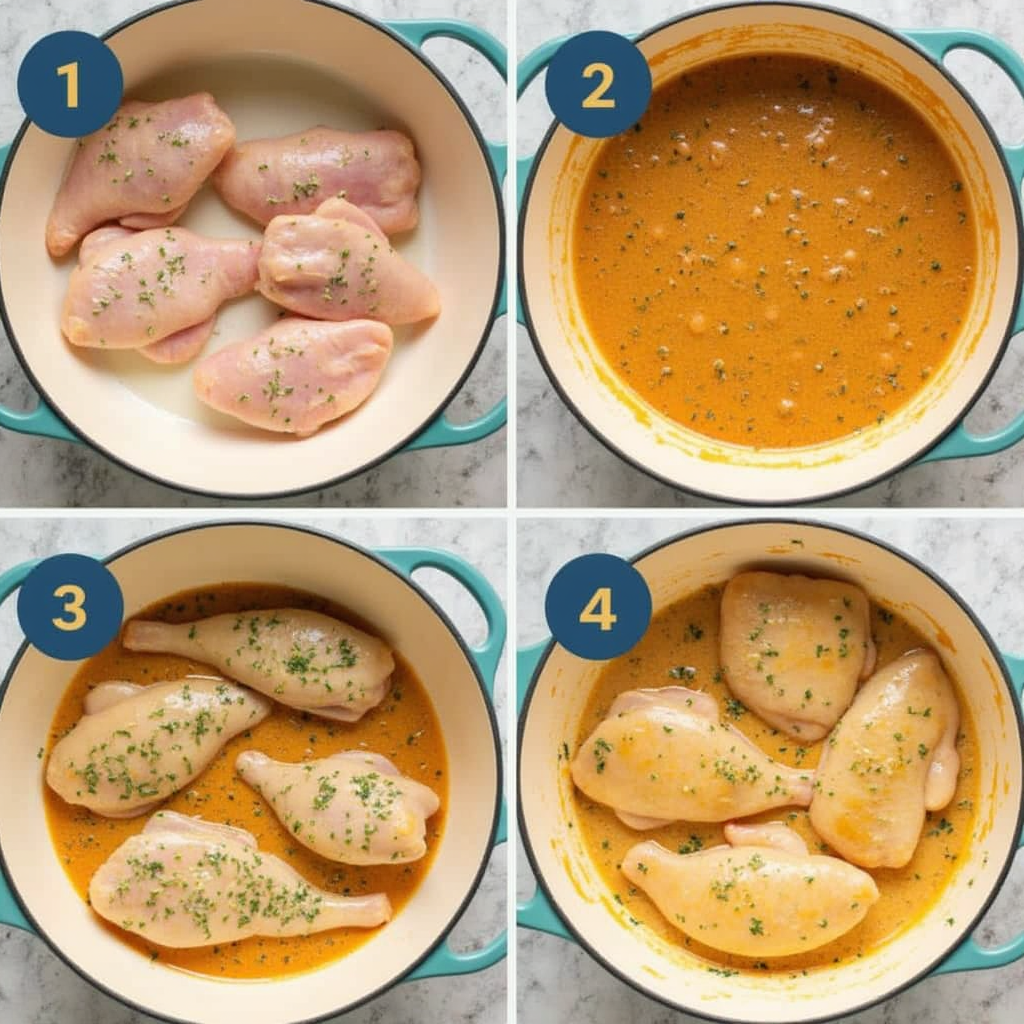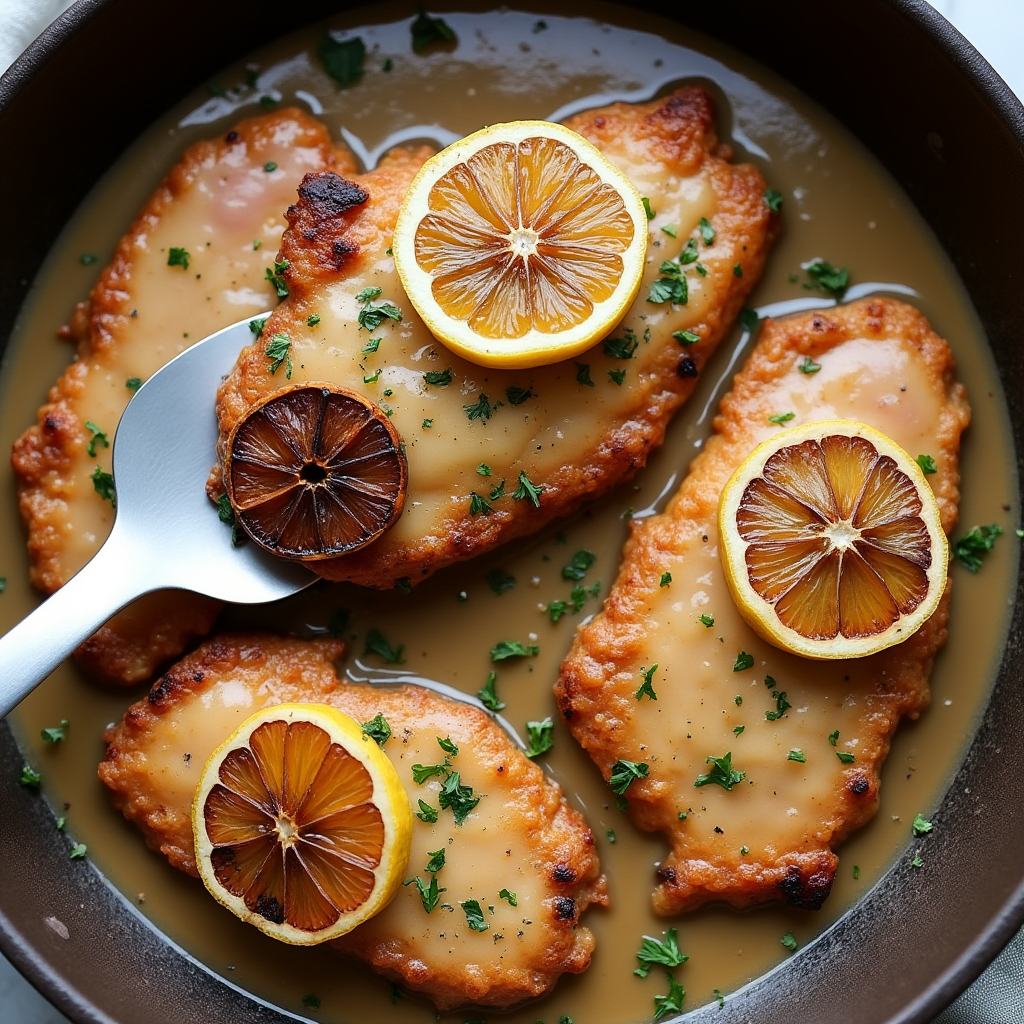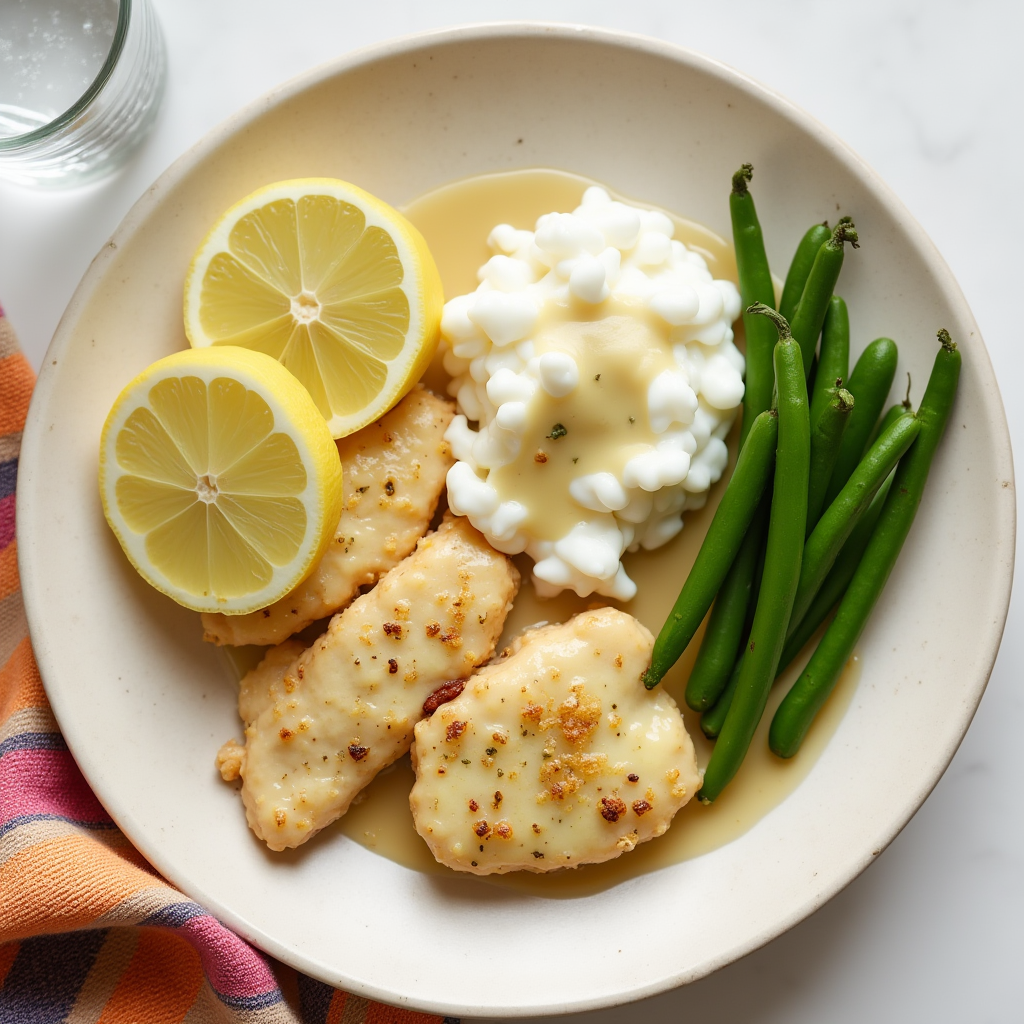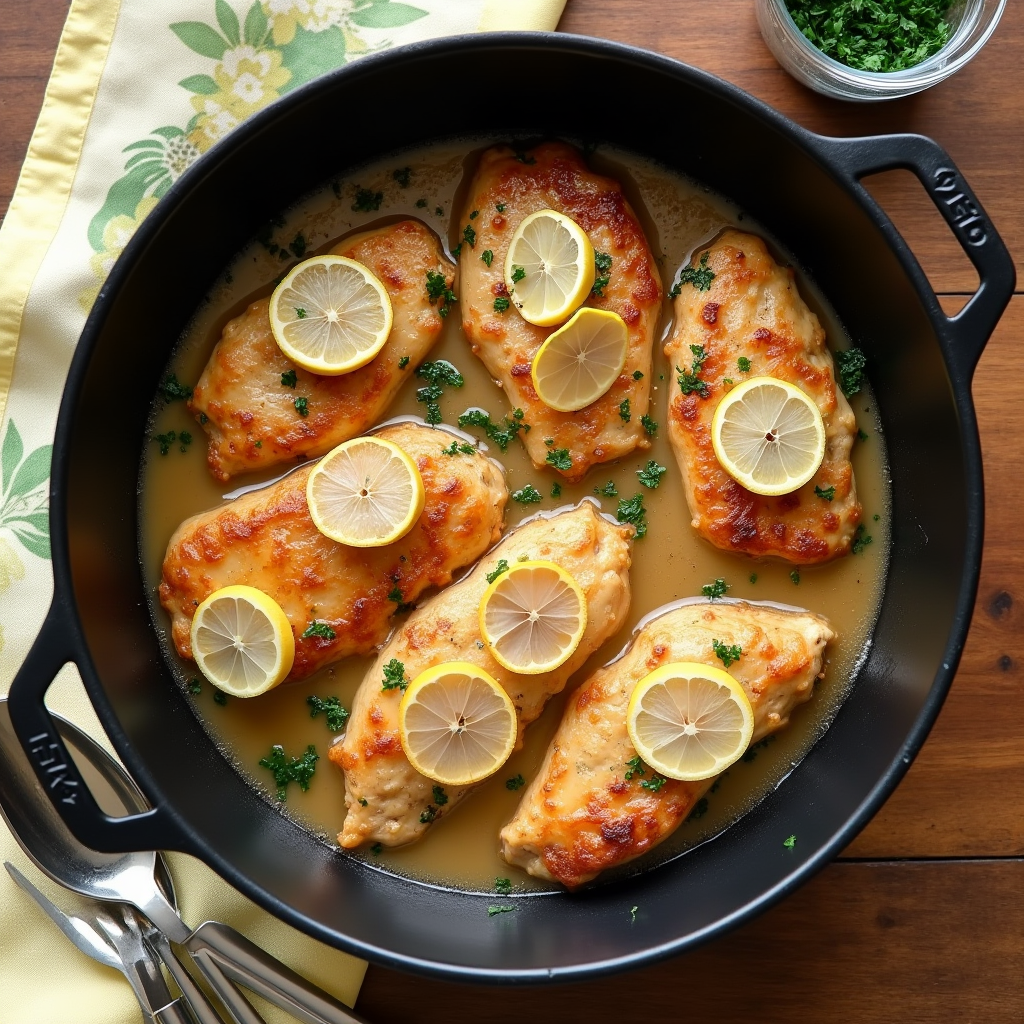Chicken Francese is a classic Italian-American dish celebrated for its rich, buttery flavor and elegant presentation. Often mistaken for its close cousin, Chicken Piccata, this dish stands out due to its unique egg-coated chicken cutlets that are pan-fried and served in a luscious lemon butter sauce. Originating from Italian immigrants who adapted traditional recipes to suit American palates, Chicken Francese has become a staple in many households and fine dining menus alike.
The hallmark of Chicken Francese lies in its simplicity, yet it never fails to impress. With just a few staple ingredients, this dish transforms everyday chicken into a restaurant-quality meal. Whether you’re hosting a dinner party or preparing a comforting weeknight dinner, Chicken Francese offers a perfect balance of flavor and sophistication.
In the sections below, you’ll learn how to prepare this timeless dish, discover its nutritional profile, and explore creative serving ideas.
Ingredients for Chicken Francese
To create a perfectly executed Chicken Francese, you’ll need a combination of fresh ingredients and pantry staples. Each component plays a vital role in achieving the signature taste and texture of this beloved dish.
Essential Ingredients:
- Chicken breasts: Boneless and skinless for even cooking.
- All-purpose flour: Used to lightly dredge the chicken.
- Eggs: For creating the signature golden coating.
- Lemon juice: Adds brightness to the sauce.
- White wine: Enhances the sauce’s depth of flavor.
- Chicken broth: Provides a savory base for the sauce.
- Butter: Delivers richness and creaminess.
- Olive oil: Ensures even frying.
- Parsley: Offers a fresh, herbal garnish.
Optional Additions:
- Garlic cloves for a hint of aromatic depth.
- A pinch of red pepper flakes for subtle heat.
- Capers for a briny twist.
By using high-quality ingredients, you can elevate your Chicken Francese from simple to spectacular. The balance of savory, tangy, and creamy flavors is what sets this dish apart.
Step-by-Step Cooking Instructions

Mastering Chicken Francese begins with following a detailed cooking process that ensures tender chicken and a perfectly balanced sauce. Here’s how to bring this dish to life in your kitchen.
1: Prepare the Chicken
- Slice the chicken breasts in half lengthwise for thinner cutlets.
- Lightly pound each piece to achieve an even thickness.
- Season with salt and pepper on both sides.
2: Dredge and Coat
- Place the flour in a shallow dish.
- Beat the eggs in a separate bowl, adding a splash of water for a smoother coating.
- Dredge each chicken piece in flour, shaking off excess, then dip into the beaten eggs.
3: Fry the Chicken
- Heat olive oil in a skillet over medium heat.
- Fry the chicken cutlets until golden brown on both sides, approximately 3-4 minutes per side.
- Remove the chicken from the pan and set aside.
4: Create the Sauce
- Deglaze the pan with white wine, scraping up any browned bits.
- Add chicken broth and lemon juice, stirring to combine.
- Simmer for a few minutes before whisking in butter for a smooth finish.
5: Combine and Serve
- Return the chicken cutlets to the pan, spooning the sauce over them.
- Simmer for another 2-3 minutes to allow the flavors to meld.
- Garnish with fresh parsley before serving.
This step-by-step process ensures your Chicken Francese achieves its signature taste and texture.
Nutritional Value of Chicken Francese
While Chicken Francese is undoubtedly a flavorful indulgence, it’s also important to understand its nutritional profile. This dish can be enjoyed as part of a balanced diet with mindful portioning.
Key Nutritional Highlights:
- Protein-rich: The chicken cutlets provide a lean source of protein.
- Moderate fat content: The butter and olive oil contribute to the dish’s richness.
- Carbohydrates: A small amount of carbs comes from the flour used for dredging.
- Vitamins and minerals: Lemon juice and parsley add vitamin C and antioxidants.
Estimated Nutritional Breakdown (per serving):
- Calories: Approximately 400-450 kcal
- Protein: 25-30 grams
- Fat: 20-25 grams
- Carbohydrates: 10-15 grams
- Fiber: 1-2 grams
While Chicken Francese is not a low-calorie meal, its high protein content makes it satisfying. Pairing it with lighter side dishes can help balance your overall meal.
Serving Suggestions
The versatility of Chicken Francese allows it to pair beautifully with a variety of side dishes. Whether you prefer classic accompaniments or creative twists, there are endless ways to serve this dish.
Classic Pairings:
- Pasta: Serve over angel hair pasta or linguine, tossing the noodles in the lemon butter sauce for a cohesive flavor.
- Rice: Fluffy white or wild rice complements the sauce’s creaminess.
- Mashed potatoes: The buttery texture enhances the dish’s indulgence.
Lighter Options:
- Steamed vegetables: Broccoli, asparagus, or green beans add a fresh contrast.
- Salad: A simple mixed greens salad with a lemon vinaigrette mirrors the dish’s citrus notes.
- Cauliflower rice: A low-carb alternative that soaks up the sauce.
Tips for Presentation:
- Garnish with lemon slices for a vibrant look.
- Sprinkle extra parsley for a fresh touch.
- Serve on a warm plate to keep the dish at an optimal temperature.
With these serving ideas, your Chicken Francese will be as visually appealing as it is delicious.
The Ultimate Guide to Chicken Francese (Continued)

Common Mistakes to Avoid
While Chicken Francese is relatively simple to prepare, there are common pitfalls that can compromise its flavor and presentation. Avoiding these mistakes ensures a flawless dish every time.
During Preparation
- Skipping the chicken pounding step: Uneven chicken pieces cook inconsistently, leaving some parts dry or undercooked.
- Overseasoning or underseasoning: Properly seasoning both the flour and chicken is crucial for balanced flavor.
- Using cold chicken: Letting the chicken reach room temperature before cooking promotes even frying.
Mistakes While Cooking
- Overcrowding the pan: Cooking too many pieces at once lowers the oil temperature, resulting in soggy rather than crisp cutlets.
- Skipping the deglazing step: Those browned bits in the pan are packed with flavor, so use wine or broth to incorporate them into the sauce.
- Curdling the sauce: Adding butter too quickly or over high heat can lead to separation instead of a creamy texture.
Mistakes in Serving
- Not resting the chicken: Giving the chicken a few minutes to rest before serving allows the juices to redistribute, ensuring moist meat.
- Serving with a cold sauce: Warm the sauce just before serving to maintain the dish’s rich, comforting appeal.
By being mindful of these missteps, you can perfect your Chicken Francese every time.
Variations of Chicken Francese
One of the great aspects of Chicken Francese is its versatility. From slight modifications to entirely new flavor profiles, you can adapt this dish to suit your tastes and dietary preferences.
Popular Recipe Variations
- Seafood Francese: Swap the chicken for shrimp or white fish like cod or sole to create a lighter, seafood-forward version.
- Vegetarian Francese: Substitute chicken with firm tofu or cauliflower steaks for a plant-based twist.
- Gluten-Free Francese: Use gluten-free flour for dredging to accommodate dietary restrictions without sacrificing texture.
Flavor Enhancements
- Herb-infused sauce: Add fresh thyme or rosemary to the sauce for added aroma.
- Spicy twist: Include a pinch of red pepper flakes for a hint of heat.
- Garlic-infused Francese: Sauté minced garlic with the olive oil to deepen the flavor of the dish.
Creative Additions
- Top with capers for a briny finish.
- Incorporate sun-dried tomatoes for a sweet and tangy contrast.
- Add artichoke hearts for Mediterranean flair.
These variations allow you to customize Chicken Francese while maintaining its signature elegance.
FAQs About Chicken Francese
How long does it take to cook Chicken Francese?
Cooking Chicken Francese typically takes about 30–40 minutes. First, preparing and dredging the chicken requires around 10 minutes. Then, frying the chicken and simmering it in the sauce takes another 20–30 minutes. With proper preparation, the entire process is straightforward and efficient.
What is Chicken Francese dredged in?
To create the perfect coating, Chickenis Francese dredged first in seasoned flour and then in beaten eggs. This two-step process ensures a light, crisp exterior that contrasts beautifully with the tender chicken inside. Additionally, the egg coating adds a golden hue that enhances the dish’s appearance.
How do you eat Chicken Francese?
When enjoying Chicken Francese, start by cutting into the tender chicken to savor the rich sauce with each bite. Pair it with pasta, rice, or vegetables to soak up the lemon butter sauce. For a balanced experience, include each side dish with the chicken in a single bite, creating a harmonious blend of flavors.
What is Chicken Francese?
Chicken Francese is a classic Italian-American dish featuring chicken cutlets that are dredged in flour, coated in egg, and pan-fried to golden perfection. The chicken is served in a tangy lemon butter sauce, which is enhanced with white wine and fresh parsley. Known for its vibrant flavor and creamy texture, this dish is both comforting and sophisticated.
Conclusion

Chicken Francese is a timeless dish that combines simplicity with sophistication. Its tender chicken cutlets, coated in a delicate egg crust and served in a tangy lemon butter sauce, make it a culinary favorite for both casual meals and special occasions. By mastering the essential techniques and avoiding common mistakes, you can confidently recreate this dish at home.
From classic presentations to creative variations, Chicken Francese offers endless possibilities for customization. Whether you stick to the traditional recipe or experiment with seafood, vegetarian options, or gluten-free alternatives, this dish is versatile enough to suit any preference. Pair it with complementary sides like pasta, vegetables, or rice for a complete and satisfying meal.
As you continue to refine your Chicken Francese skills, remember that practice and attention to detail are key. With its rich history and universally loved flavors, Chicken Francese will always hold a special place at the table.

